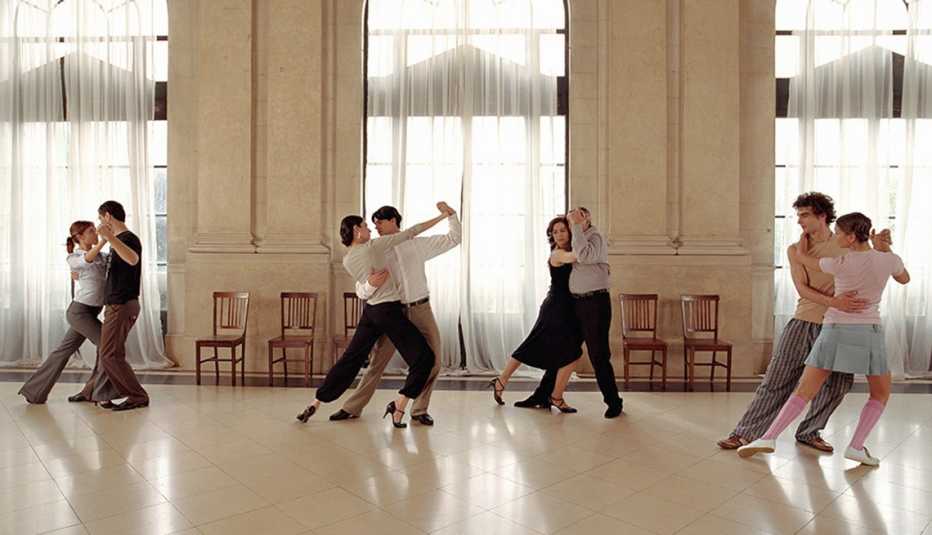Challenges


Quick Win
Dancing increases the brain’s mental flexibility — the ability to switch attention between one task and another — a skill that becomes ever more important as we age.
Try This Today
- Join a group. Find out if there’s a USA Dance chapter in your area. If you’re near one, attend a chapter social dance. They often begin with a one-hour dance lesson.
- Try other options. If you’re not near a chapter, try finding ballroom classes offered by other groups, such as:
- Local college continuing education programs
- City or county recreation departments
- Organizations such as the YMCA, community centers or Elks or Moose lodges
- Find a meetup. Search for dance groups or classes on the group-activity site Meetup.com.
Why
Dancing engages multiple regions in the brain, including sensory and motor circuits, according to a 2020 report on music from AARP’s Global Council on Brain Health. It can also improve your working memory, according to a study that followed 333 adults aged 55 and older who participated in a Latin dance program, reported in 2022 in Frontiers in Aging Neuroscience. Partner dancing has important social benefits, too: The interactive experience of moving together promotes connectedness and strengthens the brain areas devoted to empathy, according to a study of 81 young professional dancers and nondancers published in 2022 in Human Brain Mapping.










More From Staying Sharp
Nature Could Improve Your Mood
Improve your mood by spending time outside and learn how to maximize the benefits
The Benefits of Dance for Brain Health
Improve focus and navigational skills with dance classes and support your brain health
Work Out With Denise Austin: Upper-Body Firmers
This exercise may help boost upper body strength